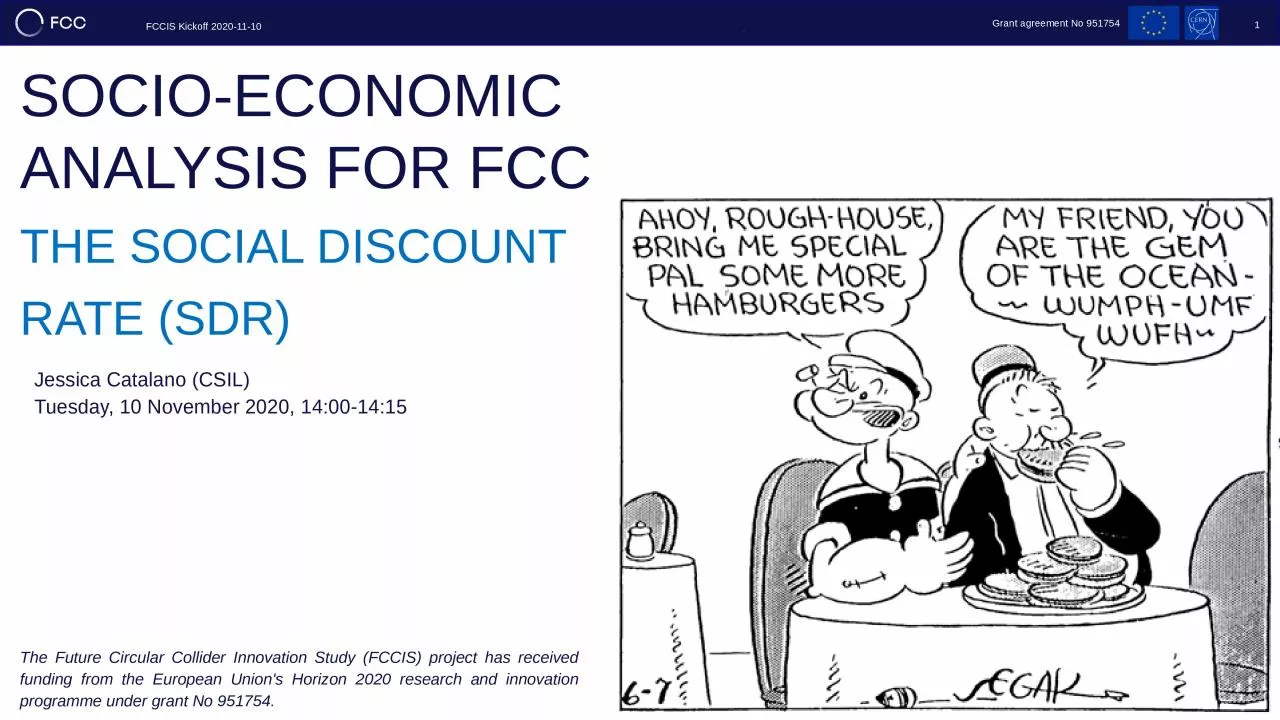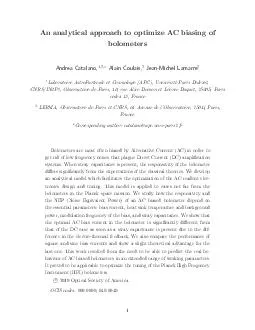PPT-1 Jessica Catalano ( CSIL
Author : jacey | Published Date : 2023-11-04
Tuesday 10 November 2020 14001415 SOCIOECONOMIC ANALYSIS FOR FCC THE SOCIAL DISCOUNT RATE SDR The Future Circular Collider Innovation Study FCCIS project has received
Presentation Embed Code
Download Presentation
Download Presentation The PPT/PDF document "1 Jessica Catalano ( CSIL" is the property of its rightful owner. Permission is granted to download and print the materials on this website for personal, non-commercial use only, and to display it on your personal computer provided you do not modify the materials and that you retain all copyright notices contained in the materials. By downloading content from our website, you accept the terms of this agreement.
1 Jessica Catalano ( CSIL: Transcript
Download Rules Of Document
"1 Jessica Catalano ( CSIL"The content belongs to its owner. You may download and print it for personal use, without modification, and keep all copyright notices. By downloading, you agree to these terms.
Related Documents














